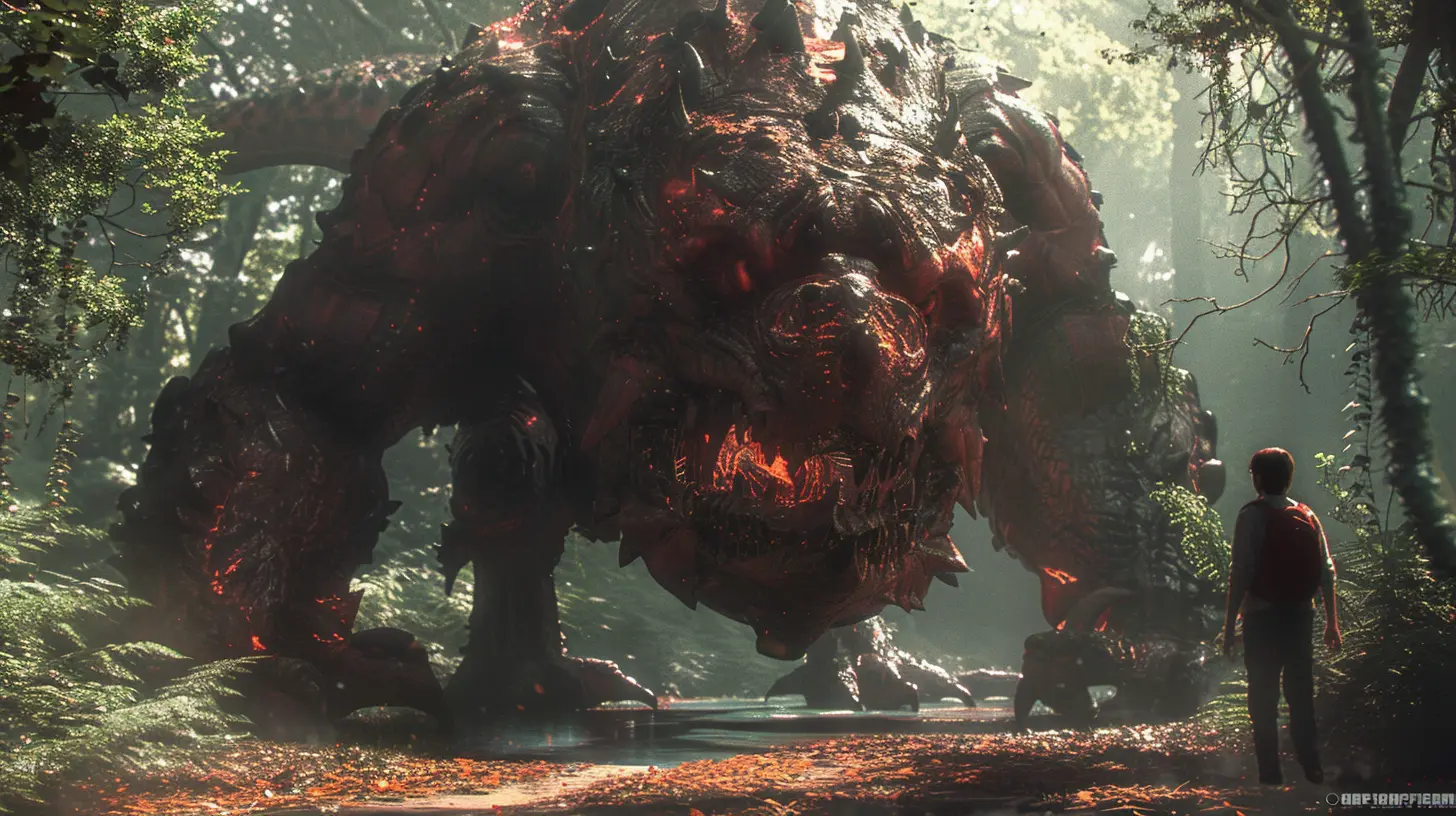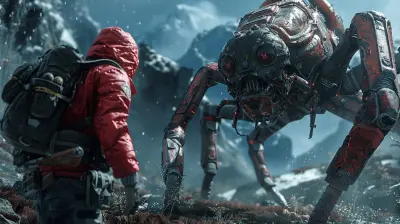Understanding the Role of Difficulty Tiers in Games
10 April 2025
When was the last time you played a video game and got completely stuck on a boss fight or a puzzle? You know, when you’re so frustrated that you’re about to rage quit, but you push through and feel like a champion after finally beating it? That moment of triumph is part of the magic of difficulty tiers in games. They’re not just there to mess with you—they actively shape how we experience and enjoy our favorite games.
Difficulty tiers play a critical role in catering to different types of players, whether you’re a “just-here-for-the-story” casual gamer or a “bring-it-on” hardcore enthusiast. But there’s way more to this topic than meets the eye. Let’s dive into the nitty-gritty of why difficulty matters, how it works, and why developers are increasingly giving us control over how hard (or easy) our gaming adventures should be.
What Are Difficulty Tiers?
First things first—what exactly are difficulty tiers? Simply put, difficulty tiers are the different levels of challenge options available in a game. You’ve probably seen labels like “Easy,” “Normal,” “Hard,” or even “Nightmare Mode” on the difficulty settings screen. These tiers give players control over how challenging the game feels.Think of it like building your ideal burger. You can stick to a basic classic cheeseburger (Easy), or you can pile on the jalapeños, ghost peppers, and every spicy sauce imaginable (Hard). It’s all about tailoring the experience to your taste—or in this case, your skill level and mood.
Some games even take it further with dynamic difficulty settings that adapt to how you're playing. Struggling with combat? The game might secretly lower the enemy's aggression to give you a fighting chance. Blazing through levels like a pro? The AI ramps things up to keep you on your toes. Pretty clever, right?
Why Do Difficulty Tiers Matter?
So why are difficulty tiers such a big deal in games? It’s because no two players are the same. We all come to gaming with different skills, preferences, and motivations. While one person might be looking for a chill, relaxing experience, another might want their thumbs to break a sweat.Here’s a closer look at why difficulty tiers matter:
1. Inclusivity for All Players
Not everyone’s an esports-level player. Difficulty tiers allow people with varying skill levels to enjoy the same game. From beginners who just picked up a controller to veterans who can speedrun a game blindfolded, tiers make sure no one feels left out.2. Encouraging Replayability
Let’s be honest—how many times have you beaten a game and thought, “Alright, now I’m ready for Hard Mode!”? Difficulty settings encourage players to replay games. They offer new challenges and keep things fresh, making it feel like a brand-new adventure on every playthrough.3. Highlighting Game Design Mastery
Difficulty tiers also shine a spotlight on a developer's creativity. Games like Dark Souls are infamous for their unforgiving difficulty, but they’re also celebrated because every challenge feels fair. When a game is tough but not impossible, it forces you to think, adapt, and improve.
The Psychology Behind Difficulty Choices
Okay, let’s get a little philosophical here. Why do some of us crave punishing difficulty while others prefer a more laid-back experience? Psychology has a lot to say about this.The Power of Challenge
Humans thrive on challenges. Beating a tough level or boss releases feel-good chemicals like dopamine in our brains. It’s that rush of accomplishment that keeps us coming back for more. Difficulty tiers let players decide just how much of this thrill they want.The Flow State
Ever heard of “flow”? It’s that sweet spot where the difficulty of a task matches your skill level, making you feel totally immersed and in the zone. Games with well-designed tiers help players find their flow state, whether they're casual gamers or seasoned pros.Player Identity
Some people just love the bragging rights that come with beating a game on its hardest setting. It’s a badge of honor, a way to say, “Yeah, I did that.” On the flip side, others don’t feel the need to prove anything to anyone. And that’s okay too.
Different Approaches to Difficulty Tiers
Not all games handle difficulty in the same way. Developers have come up with some wildly creative approaches to make their games accessible yet challenging.Traditional Flat Settings
This is your classic “Easy,” “Normal,” “Hard” setup. It’s straightforward, and everyone knows what to expect. Think of games like Resident Evil or God of War, where you choose a difficulty before starting and stick with it throughout.Dynamic Difficulty Adjustment (DDA)
Dynamic difficulty is like your game secretly becoming your best friend. It adjusts the challenge based on how you’re performing. Struggling with enemies? They’ll go a bit easier on you. Crushing every challenge effortlessly? The game quietly throws tougher obstacles your way.A great example of this is the Left 4 Dead series. The “AI Director” adjusts enemy spawns, ammo availability, and difficulty on the fly, ensuring tension stays high but not overwhelming.
Customizable Difficulty
Some games let you fine-tune specific elements to create a personalized challenge. Want super-tough enemies but unlimited save points? Go for it. Games like Celeste and The Last of Us Part II give players granular control over elements like combat intensity, puzzle difficulty, and even accessibility options.The Debate: Easy Mode vs. “Git Gud” Mentality
Let’s talk about the elephant in the room—the gaming community’s divide over easy modes. There’s an ongoing debate between players who believe every game should be accessible and those who think adding easier options undermines the experience.Here’s the thing: both sides have valid points. Games like Dark Souls are designed as brutal challenges, where the difficulty is an integral part of the narrative and gameplay. For those players, overcoming the challenge is the entire point. Adding an easy mode might dilute that experience.
On the flip side, gaming is for everyone. Adding an easy mode doesn’t take anything away from hardcore players—it just opens the door for more people to enjoy the game. At the end of the day, it’s about giving players choices, not forcing them into one-size-fits-all experiences.
How Difficulty Affects Game Design and Storytelling
Difficulty doesn’t just make games harder—it can actually enhance the story. A well-designed difficulty tier can:- Increase Immersion: Imagine playing a survival horror game where supplies are scarce, and every enemy encounter feels life-threatening. On Hard Mode, the struggle becomes real, putting you in the protagonist’s shoes.
- Convey Themes: Sometimes, difficulty reflects narrative themes. For example, Sekiro: Shadows Die Twice emphasizes perseverance and overcoming failure, tying its punishing difficulty to its overall message.
- Balance Gameplay: Properly implemented difficulty tiers ensure gameplay feels balanced and rewarding, regardless of the setting you choose.
The Rise of Accessibility in Gaming
The gaming industry has made some amazing strides in recent years to make games more accessible. Features like adjustable difficulty settings, audio descriptions, colorblind modes, and even controller remapping ensure that as many people as possible can enjoy gaming.Games like The Last of Us Part II and Celeste are shining examples of how accessibility and difficulty customization can go hand in hand. It’s not just about making things easier—it’s about making games playable and enjoyable for everyone, no matter their circumstances.
Final Thoughts: Embrace the Challenge—Your Way
At the end of the day, difficulty tiers aren’t about who's “better” at gaming. They’re about giving players the freedom to craft their own experiences. Whether you’re breezing through on Easy Mode or sweating bullets on Ultra Nightmare, every choice is valid. Games should be fun, challenging, and, most importantly, yours to enjoy however you like.So, the next time someone gives you grief for playing on a lower difficulty (or you’re tempted to judge someone for doing the same), remember: it’s about the journey, not the bragging rights. Pick the tier that feels right for you and enjoy every triumph, big or small.
all images in this post were generated using AI tools
Category:
Video Game DesignAuthor:

Francesca West
Discussion
rate this article
6 comments
Rory McCaffrey
Great article! Understanding difficulty tiers truly enhances our gaming experience. It’s fascinating how they cater to various skill levels, allowing everyone to find their perfect challenge and enjoy the journey. Keep up the insightful writing!
May 2, 2025 at 4:08 AM

Francesca West
Thank you for your kind words! I'm glad you found the article insightful. Difficulty tiers indeed play a crucial role in enhancing the gaming experience for everyone. Happy gaming!
Kristina Jimenez
Difficulty tiers: where I discover my epic skills and my epic failures collide hilariously!
April 24, 2025 at 3:25 PM

Francesca West
Glad you found the humor in the challenges! Difficulty tiers really do bring out both our epic skills and our hilarious missteps.
Ingrid McKale
The exploration of difficulty tiers in gaming highlights their dual role as both a challenge and a tool for inclusivity. By accommodating various skill levels, developers can enhance player engagement while fostering a sense of achievement, ultimately enriching the gaming experience for a broader audience.
April 19, 2025 at 3:52 AM

Francesca West
Thank you for your insightful comment! Difficulty tiers indeed play a crucial role in making games accessible and enjoyable for players of all skill levels, enhancing overall engagement and satisfaction.
Zaren Shaffer
Difficulty tiers: a dance of challenge and triumph.
April 17, 2025 at 5:07 PM

Francesca West
Thank you! Difficulty tiers indeed create a dynamic balance that enhances player engagement and satisfaction.
Valerie McNeal
Great article! Difficulty tiers enhance player experience by catering to different skill levels, encouraging engagement and mastery while keeping the challenge enjoyable. Looking forward to more insights!
April 12, 2025 at 2:28 PM

Francesca West
Thank you! I'm glad you found the article insightful. Difficulty tiers truly do play a crucial role in enhancing player engagement. Stay tuned for more!
Alvin McCullough
Difficulty tiers in games serve as a crucial bridge between player engagement and challenge. They cater to diverse skill levels, enhancing accessibility while preserving the core experience for all.
April 11, 2025 at 4:56 AM

Francesca West
Thank you for your insightful comment! I completely agree—difficulty tiers are essential for balancing player engagement and challenge, making games more accessible while maintaining their core experience.



